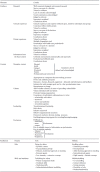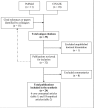A critical synthesis of literature on the promoting action on research implementation in health services (PARIHS) framework
- PMID: 20973988
- PMCID: PMC2988065
- DOI: 10.1186/1748-5908-5-82
A critical synthesis of literature on the promoting action on research implementation in health services (PARIHS) framework
Abstract
Background: The Promoting Action on Research Implementation in Health Services framework, or PARIHS, is a conceptual framework that posits key, interacting elements that influence successful implementation of evidence-based practices. It has been widely cited and used as the basis for empirical work; however, there has not yet been a literature review to examine how the framework has been used in implementation projects and research. The purpose of the present article was to critically review and synthesize the literature on PARIHS to understand how it has been used and operationalized, and to highlight its strengths and limitations.
Methods: We conducted a qualitative, critical synthesis of peer-reviewed PARIHS literature published through March 2009. We synthesized findings through a three-step process using semi-structured data abstraction tools and group consensus.
Results: Twenty-four articles met our inclusion criteria: six core concept articles from original PARIHS authors, and eighteen empirical articles ranging from case reports to quantitative studies. Empirical articles generally used PARIHS as an organizing framework for analyses. No studies used PARIHS prospectively to design implementation strategies, and there was generally a lack of detail about how variables were measured or mapped, or how conclusions were derived. Several studies used findings to comment on the framework in ways that could help refine or validate it. The primary issue identified with the framework was a need for greater conceptual clarity regarding the definition of sub-elements and the nature of dynamic relationships. Strengths identified included its flexibility, intuitive appeal, explicit acknowledgement of the outcome of 'successful implementation,' and a more expansive view of what can and should constitute 'evidence.'
Conclusions: While we found studies reporting empirical support for PARIHS, the single greatest need for this and other implementation models is rigorous, prospective use of the framework to guide implementation projects. There is also need to better explain derived findings and how interventions or measures are mapped to specific PARIHS elements; greater conceptual discrimination among sub-elements may be necessary first. In general, it may be time for the implementation science community to develop consensus guidelines for reporting the use and usefulness of theoretical frameworks within implementation studies.
Figures
References
LinkOut - more resources
Full Text Sources
Medical
Miscellaneous



